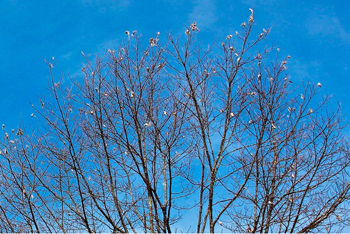 We have a growing Browntail Moth problem in our area. Several people around Clary Lake have recently brought the problem to my attention. They’ve been around a while, so you may be familiar with them already. If not, you should familiarize yourselves with these critters. They’re nasty. Besides being bad for the trees (primarily Oaks, but they infest other varieties), the caterpillars have tiny hairs which can cause serious problems for people. Our area has until recently been considered a “Low Risk” area for Browntails, but from my recent observations it sure looks like they’re rapidly becoming a significant problem.
We have a growing Browntail Moth problem in our area. Several people around Clary Lake have recently brought the problem to my attention. They’ve been around a while, so you may be familiar with them already. If not, you should familiarize yourselves with these critters. They’re nasty. Besides being bad for the trees (primarily Oaks, but they infest other varieties), the caterpillars have tiny hairs which can cause serious problems for people. Our area has until recently been considered a “Low Risk” area for Browntails, but from my recent observations it sure looks like they’re rapidly becoming a significant problem.
Here’s an excerpt from a post about them from the Maine Center for Disease Control & Prevention:
“The browntail moth caterpillar has tiny poisonous hairs that cause dermatitis similar to poison ivy on sensitive individuals. People may develop dermatitis from direct contact with the caterpillar or indirectly from contact with airborne hairs. The hairs become airborne from either being dislodged from the living or dead caterpillar or they come from cast skins with the caterpillar molts. Most people affected by the hairs develop a localized rash that will last for a few hours up to several days but on some sensitive individuals the rash can be severe and last for several weeks. The rash results from both a chemical reaction to a toxin in the hairs and a physical irritation as the barbed hairs become embedded in the skin. Respiratory distress from inhaling the hairs can be serious.”
Nasty stuff.
The Midcoast Conservancy will be offering an info session on the Browntail Moth this coming Thursday from 5 PM to 6:30 PM in Edgecomb. Complete details are available in the following post from the Midcoast Conservancy website:
https://www.midcoastconservancy.org/events/browntail-moth-info-session/
To check and see if you have Browntail moth nests on your property, go out and look up at the tops of Oak trees and if you see what look like scattered leaves that didn’t blow off last fall, they’re likely Browntail moth nests. Here’s what they look like:

